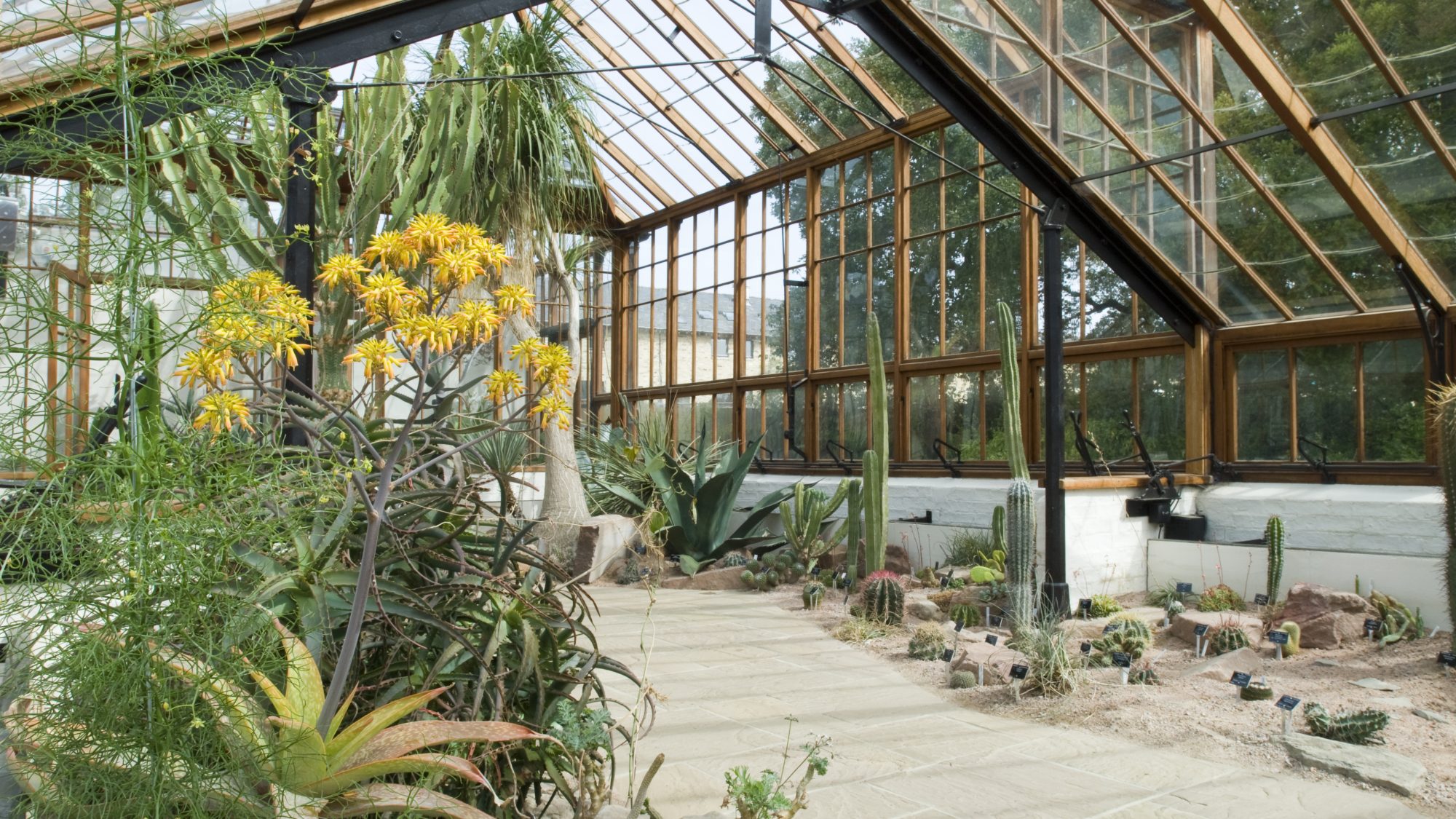This workshop explores desert, tropical rainforest, mountain, temperate woodland and fenland. Pupils learn how the plants in these biomes are adapted for the conditions in which they grow and find out about plants of economic importance, including what issues are caused by their mass production.
Availability
This workshop is available year round.
Pupils will
- Learn about the conditions in each biome and what causes these conditions
- Discover the adaptations of the plants that live there
- Learn about some economically important plants and how their mass production impacts local habitats and people
Curriculum links
| KS3 Geography | Understand how human and physical processes interact to influence, and change landscapes, environments and the climate; and how human activity relies on effective functioning of natural systems. |
| KS4 AQA The living world – tropical rainforests | Tropical rainforest ecosystems have a range of distinctive characteristics.
The physical characteristics of a tropical rainforest. The interdependence of climate, water, soils, plants, animals and people. How plants and animals adapt to the physical conditions. Issues related to biodiversity. Tropical rainforests need to be managed to be sustainable. Value of tropical rainforests to people and the environment. Strategies used to manage the rainforest sustainably – selective logging and replanting, conservation and education, ecotourism and international agreements about the use of tropical hardwoods, debt reduction. |
| KS4 AQA The living world – hot deserts | Hot desert ecosystems have a range of distinctive characteristics.
The physical characteristics of a hot desert. The interdependence of climate, water, soils, plants, animals and people. How plants and animals adapt to the physical conditions. Issues related to biodiversity. |
| KS4 AQA The living world – cold environments | Cold environments (polar and tundra) have a range of distinctive characteristics.
The physical characteristics of a cold environment. The interdependence of climate, permafrost, soils, plants, animals and people. How plants and animals adapt to the physical conditions. Issues related to biodiversity. |
| KS4 Edexcel Ecosystems, biodiversity and management
(also Edexcel Geography B) |
Large-scale ecosystems are found in different parts of the world and are important
Distributions and characteristics of the world’s large-scale ecosystems (tropical, temperate and boreal forests, tropical and temperate grasslands, deserts and tundra). |
| KS4 Edexcel Tropical rainforests | Tropical rainforests show a range of distinguishing features.
a. Biotic and abiotic characteristics of the tropical rainforest ecosystem (climate, soils, water, plants, animals and humans). b. The interdependence of biotic and abiotic characteristics (climate, soils, water, plants, animals and humans) and the nutrient cycle (Gersmehl model). (4) c. Why rainforests have very high biodiversity and how plants (stratified layers, buttress roots, drip tips) and animals (strong limbs, modified wings and beaks, camouflage) are adapted to that environment. Tropical rainforest ecosystems provide a range of goods and services some of which are under threat. Examples of goods and services provided by tropical rainforest ecosystems (food stuffs, medicines, timber and recreation). |
| KS4 Edexcel Deciduous woodlands | Deciduous woodlands show a range of distinguishing features.
a. Abiotic and biotic characteristics of the deciduous woodland ecosystem (climate, soil, water, plants, animals and humans). b. The interdependence of biotic and abiotic characteristics (climate, soil, water, plants, animals and humans) and the nutrient cycle (Gersmehl model). c. Why deciduous woodlands have moderate biodiversity and how plants (leaf size and structure, water conservation in winter) and animals (migration, hibernation and food storage) are adapted to that environment. |
| KS4 OCR Ecosystems | What are ecosystems?
Understand the concept of an ecosystem as being the interdependence of climate, soil, water, plants and animals. • Outline the global distribution of polar regions, coral reefs, grasslands, temperate forests, tropical forests and hot deserts. • Overview of the climate, flora and fauna within these ecosystems. |
Complimentary self-led activities
If you are looking for ideas of activities to self-lead in the Garden after your workshop ends, we recommend:




